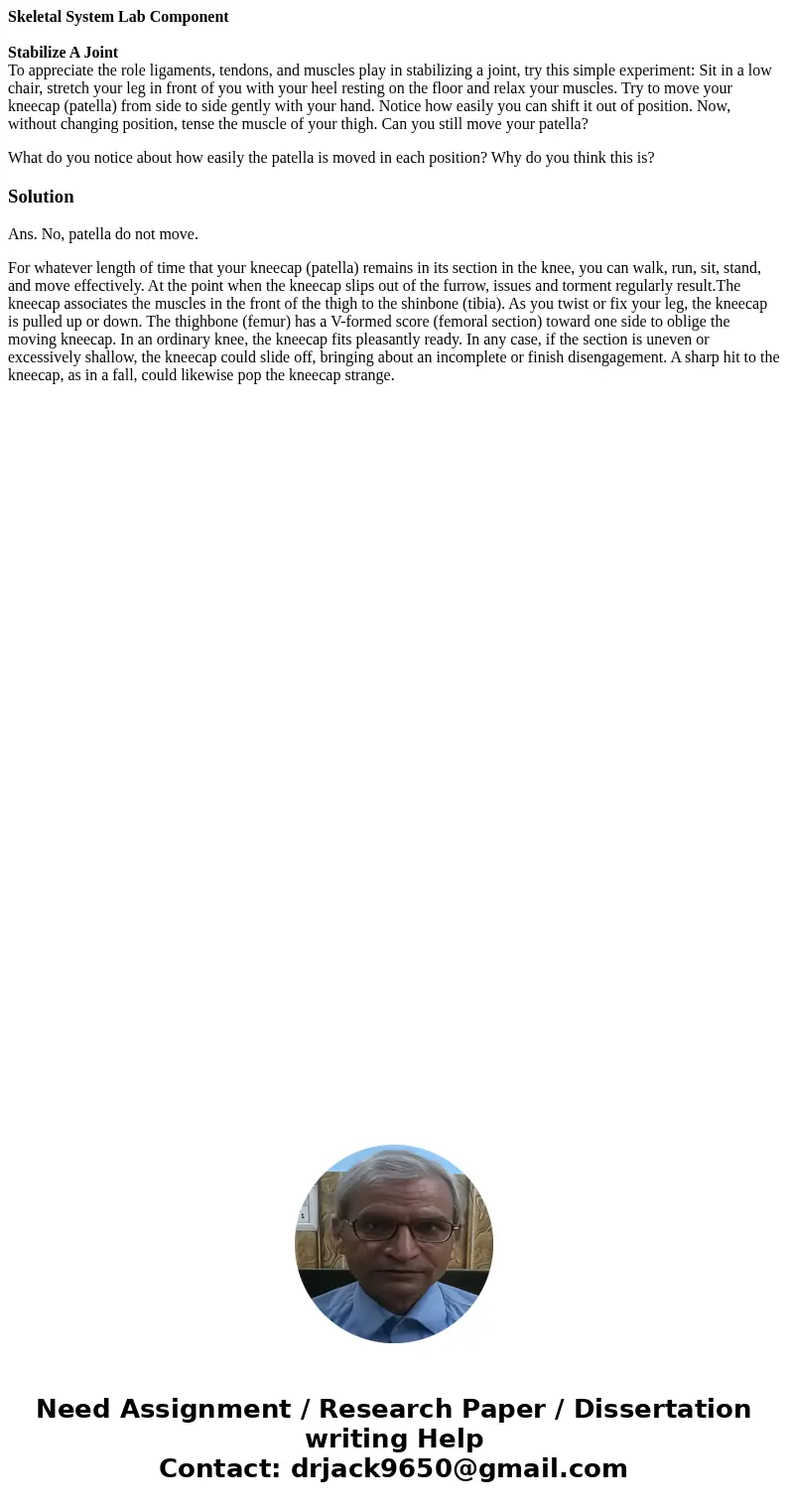Skeletal System Lab Component Stabilize A Joint To appreciat
Skeletal System Lab Component
Stabilize A Joint
To appreciate the role ligaments, tendons, and muscles play in stabilizing a joint, try this simple experiment: Sit in a low chair, stretch your leg in front of you with your heel resting on the floor and relax your muscles. Try to move your kneecap (patella) from side to side gently with your hand. Notice how easily you can shift it out of position. Now, without changing position, tense the muscle of your thigh. Can you still move your patella?
What do you notice about how easily the patella is moved in each position? Why do you think this is?
Solution
Ans. No, patella do not move.
For whatever length of time that your kneecap (patella) remains in its section in the knee, you can walk, run, sit, stand, and move effectively. At the point when the kneecap slips out of the furrow, issues and torment regularly result.The kneecap associates the muscles in the front of the thigh to the shinbone (tibia). As you twist or fix your leg, the kneecap is pulled up or down. The thighbone (femur) has a V-formed score (femoral section) toward one side to oblige the moving kneecap. In an ordinary knee, the kneecap fits pleasantly ready. In any case, if the section is uneven or excessively shallow, the kneecap could slide off, bringing about an incomplete or finish disengagement. A sharp hit to the kneecap, as in a fall, could likewise pop the kneecap strange.

 Homework Sourse
Homework Sourse